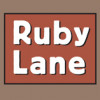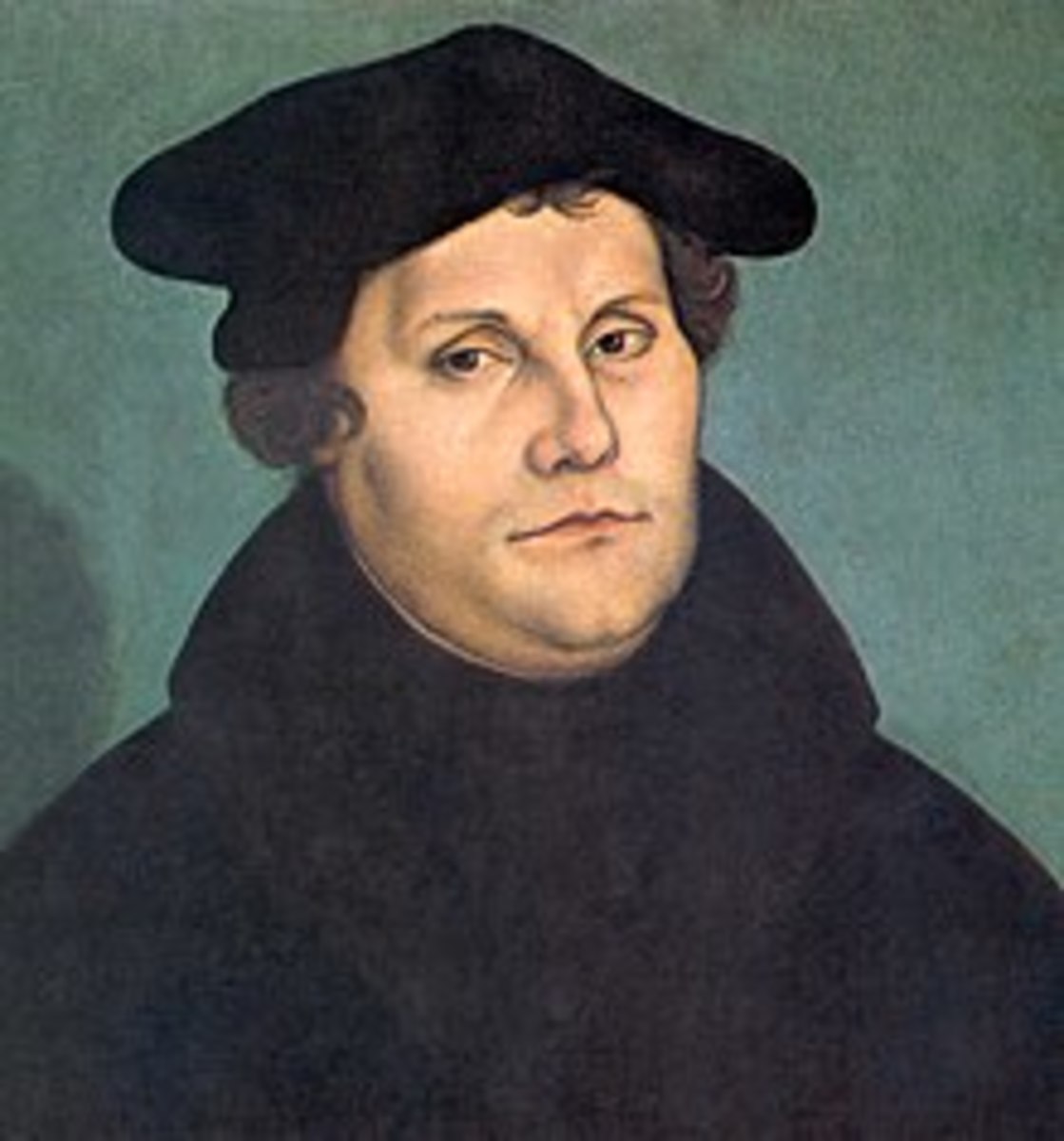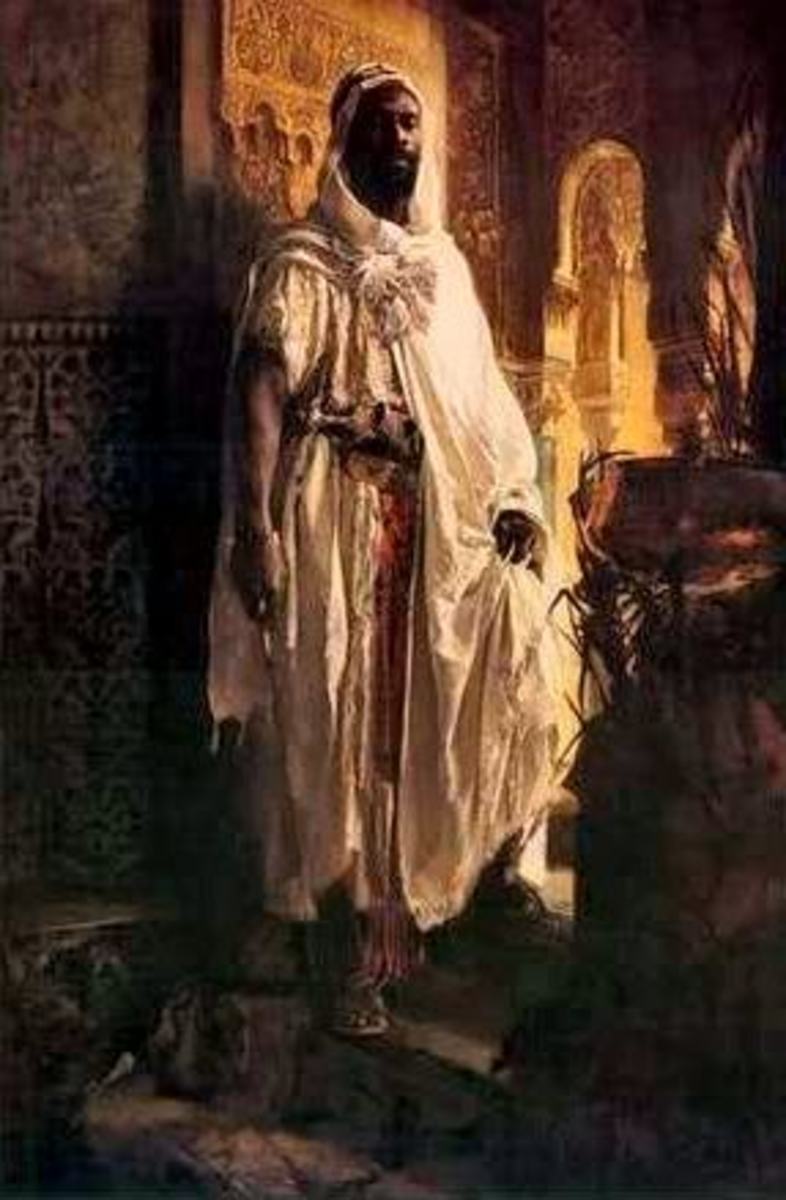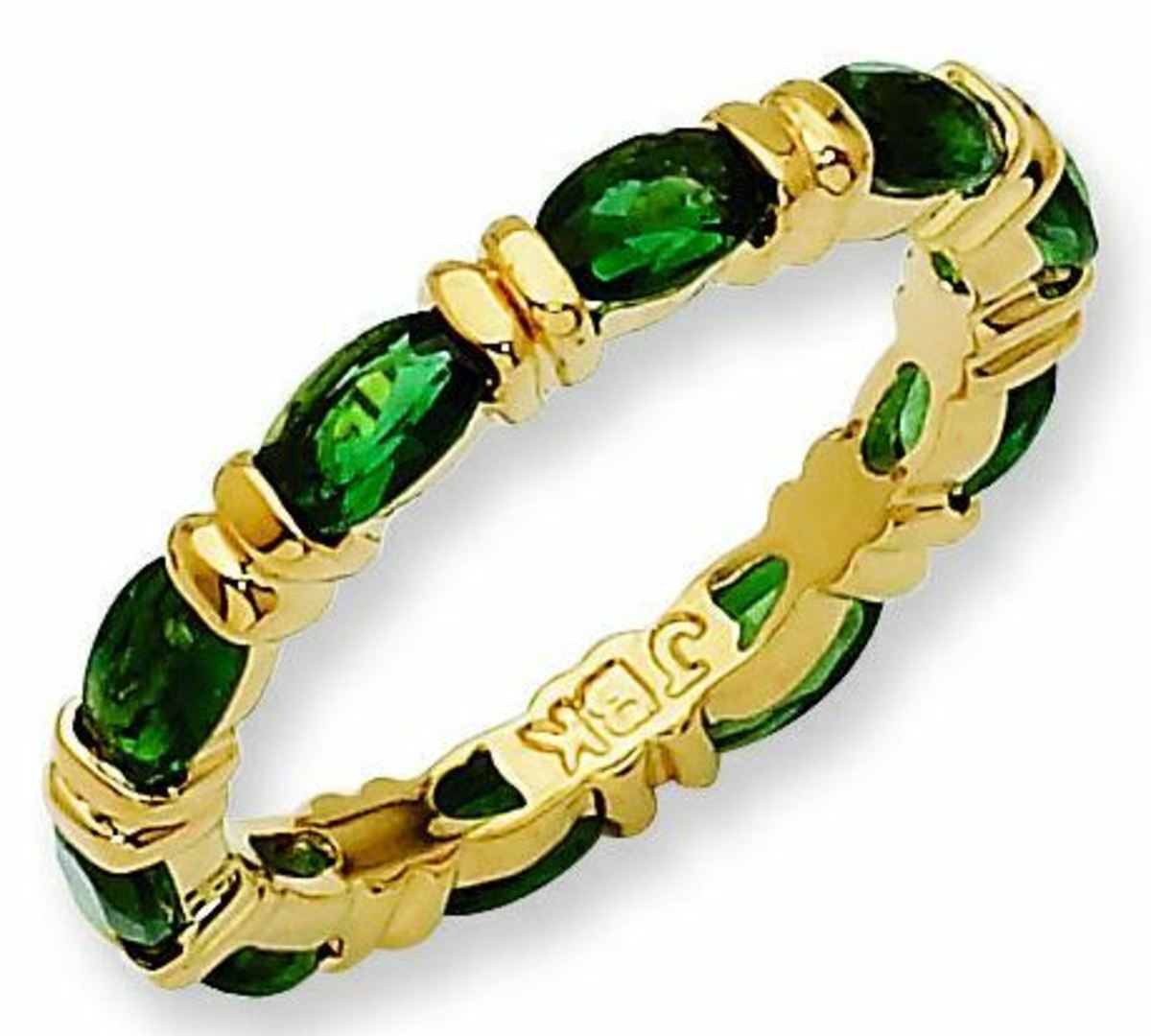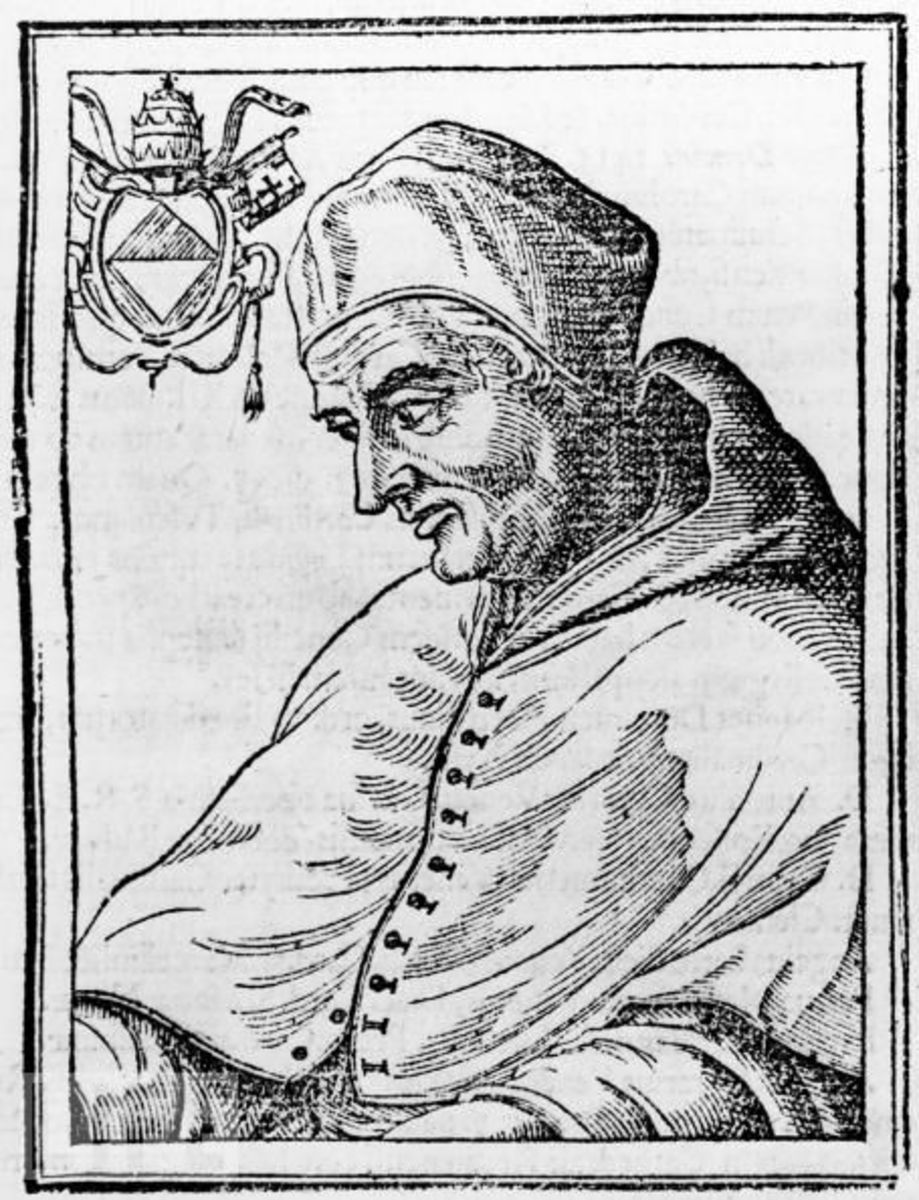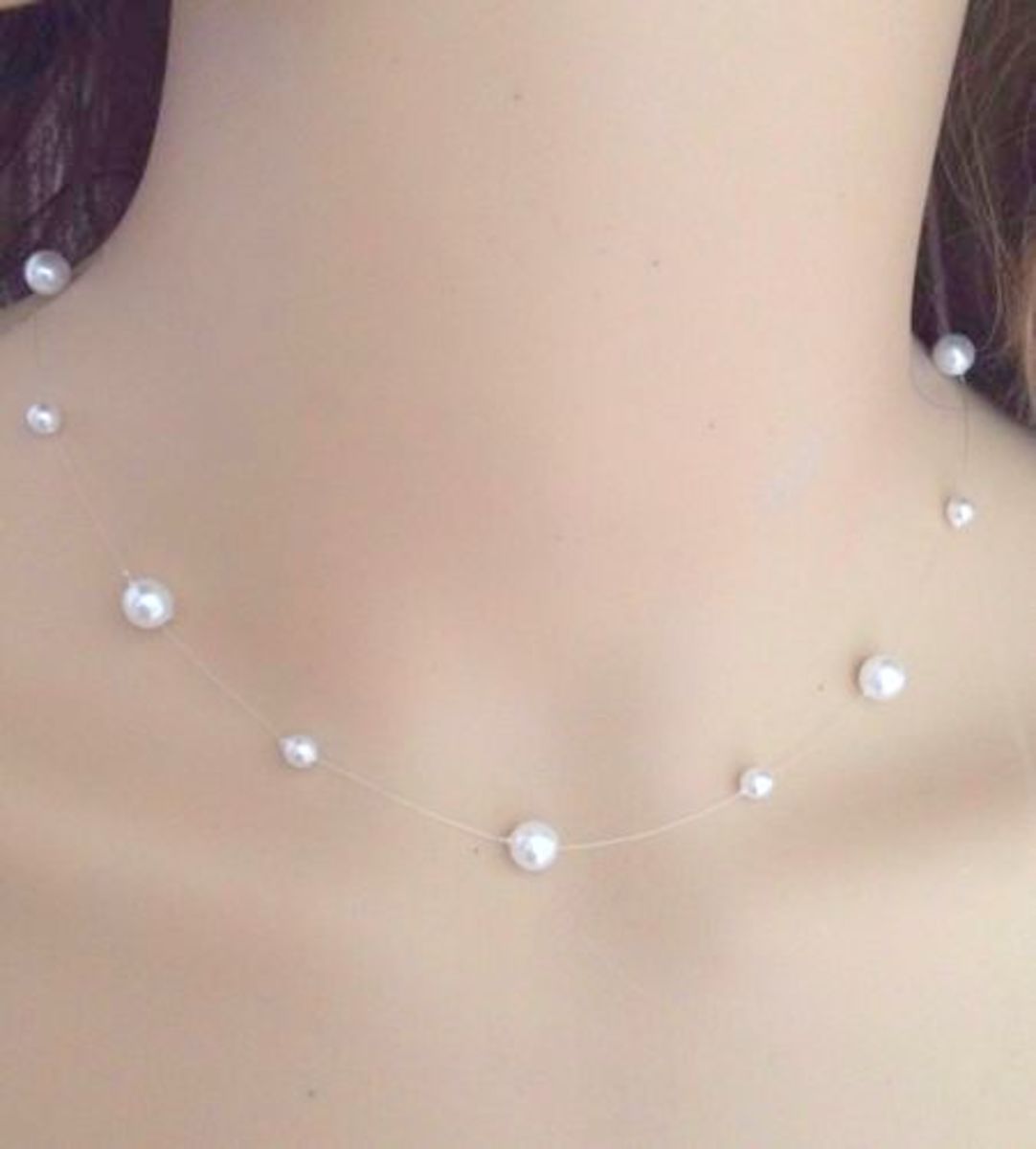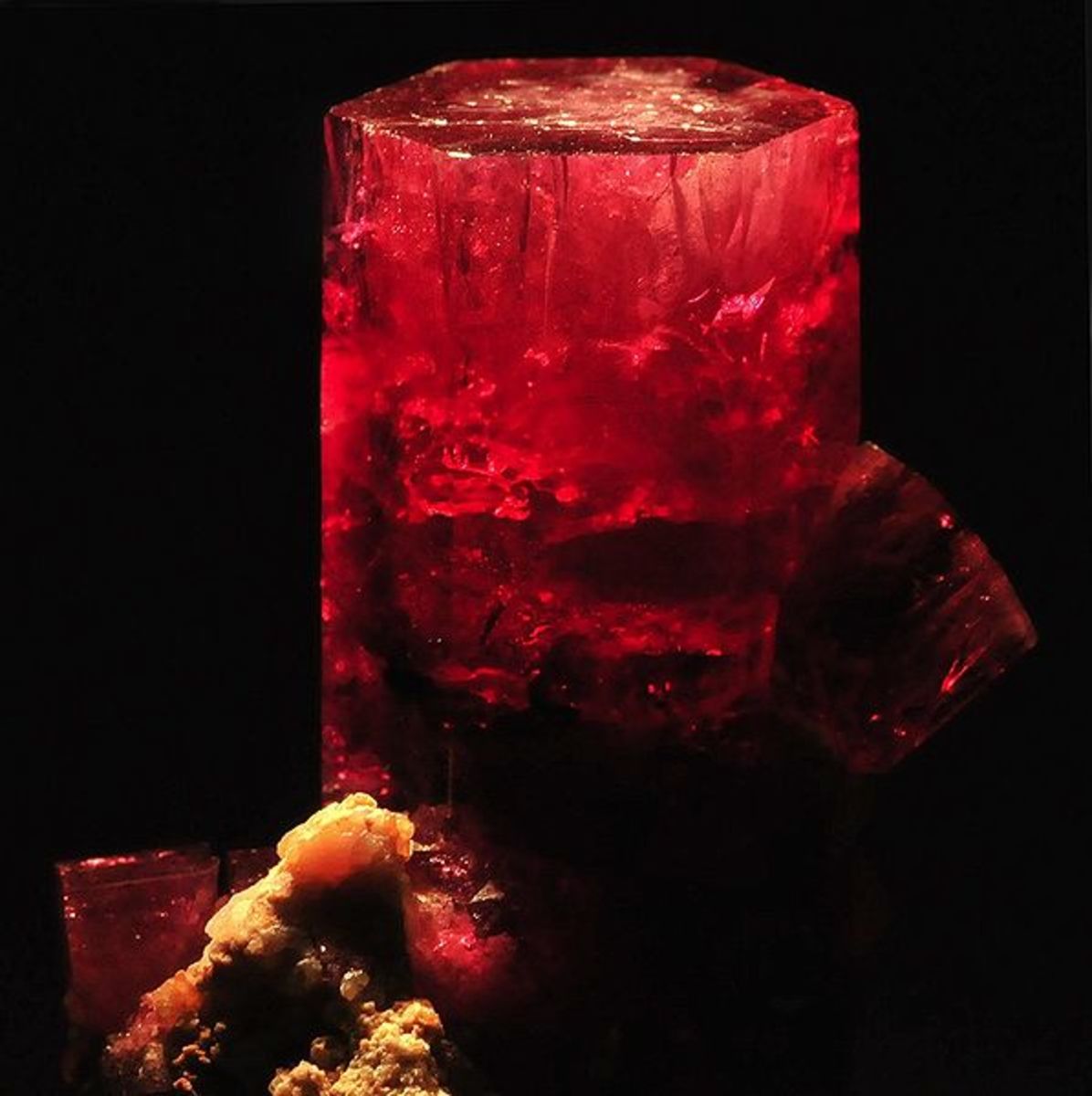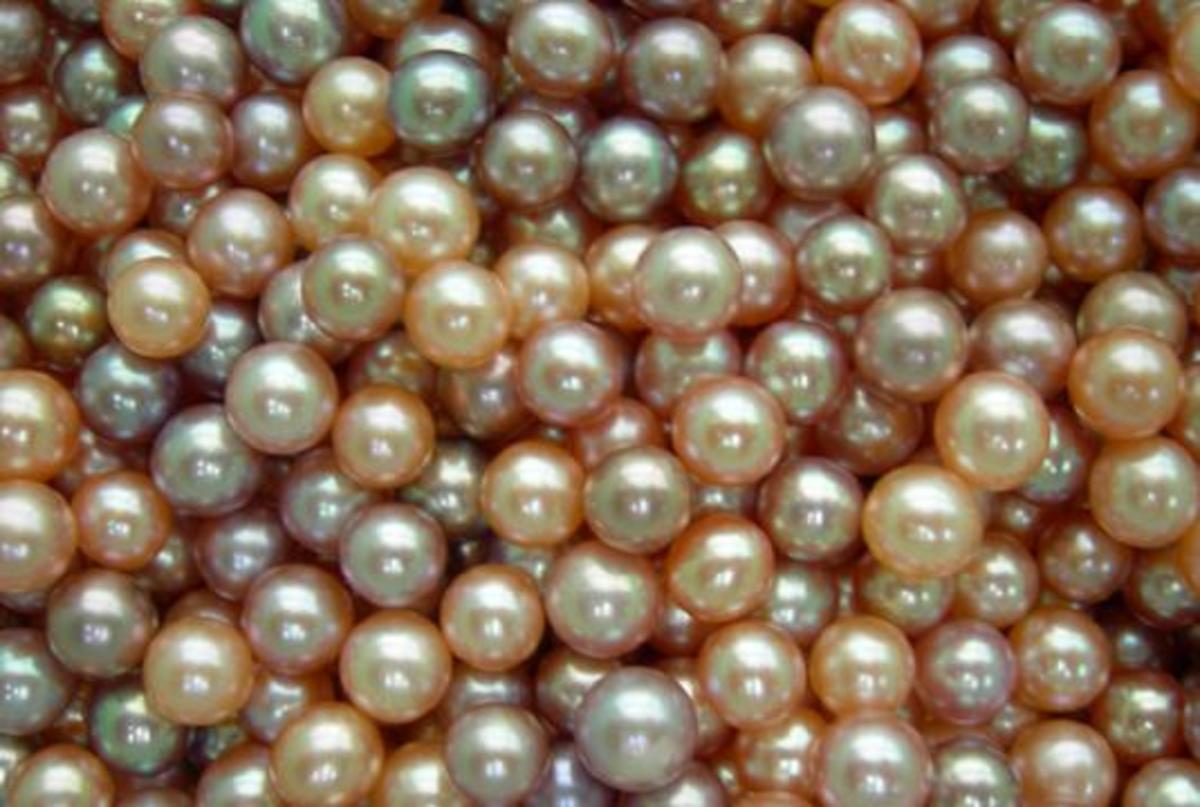Jewelry History - 1500 to 1800-Part 1
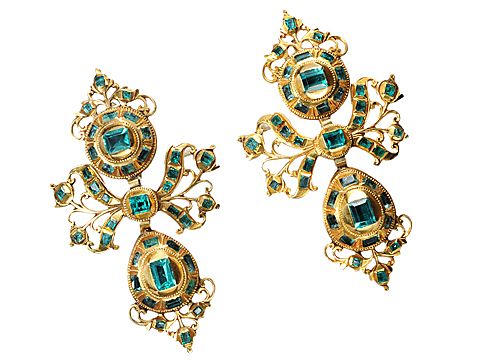
While the Renaissance started in the 14th century, some of its brightest lights shine in the 16th century. The Byzantine empire fell in 1453, and many exiles from the areas now controlled by the Ottoman Turks flee to Europe, bringing knowledge that had been forgotten through the Middle Ages. Michelangelo, daVinci, and Raphael dominate the visual arts in the early 1500s. Copernicus and Galileo bring different views of the universe , and our place in it, to the world. Italy became the center for many developments, having the wealth from trade with Asia and Europe, as well as the power of the Church.
The development of humanist philosophy may have led to the Protestant Reformation, followed by the Anglican Reformation. The power of the once universal Church was watered down. Religious wars dominated Europe for much of the next two centuries, with political and religious affiliations shifting, and new countries, kingdoms and empires came into play. Nations, as we now know them, began to come into being.
Following the discovery of America, a great age of exploration followed. Spanish, Portuguese, Dutch, French, and English explorers fought to claim the world for their countries.
The 16th Century
Christopher Columbus led Spain into the forefront of world exploration when her claimed his landfall in the Americas for Spain. Portugal and Spain are the front runners in the New World for this century, which includes Pizarro’s subjugation of the Incas and Cortez’s similar conquest of the Aztecs. Metal smithing dates back to 5000 BCE in the Americas, with gold work dating to around 2000 BCE. The skills seemed to develop in South America and spread north. Silver mines, in Peru and other locations, provided vast amounts of silver for trade. Some of this went directly from South America to China, to secure Asian items. Wonderful handcrafted pieces of various ages were sent back to Europe, along with gold and Emeralds. Some of the outstanding Emeralds of the period have been recycled into various jewelry items over the years.
The Middle East comes under Ottoman domination, and the Mughal Empire arises in India. It will be centuries before Europeans return to any of these lands as conquerors. Russia is united for the first time under a Tsar, Ivan. The Ottomans and Tatars will engage in raids and wars with Europe and Russia for some time.
Elizabeth becomes Queen of England, and the English ascendency in world domination begins. England’s defeat of the Spanish Armada secured this position.
Explorers attempted to open Japan and China to trade, but were largely rebuffed. Trade between all parts of the world expanded.
The 17th Century
The English, French, and Dutch all establish bases in the New World. The Netherlands, now independent from Spain, is a major player on the world’s stage, and the artists from the Low Countries dominate the Art World: Rembrandt, Ruebens, and Vermeer. France solidifies its boundaries, under the leadership of Louis XIV and Cardinal Richelieu. Their wars with England will continue into the 19th Century, at various times and places. Science, once considered a branch of classic philosophy, develops its own identity.
The 18th Century
George I comes to the throne in England, the first king from the House of Hanover. His grandson will see the loss of some of the American colonies. In the same time, England will start their colonial expansion into the Indian sub-continent, after the fall of the Mughal dynasty. The jeweled treasures of India will start finding their way to Europe, on a regular and often involuntary basis. The steam engine is developed, originally in conjunction with pumps for mining operations. Water wheels are improved for industry, powering the Spinning Jenny, a loom that brought mechanization to the textile trade. The Industrial Revolution has started, and production of all items will see amazing changes. New economic theories for the new mechanized world of trade develop. In a somewhat related matter, the first major stock market crash, The South Sea Bubble, occurs.
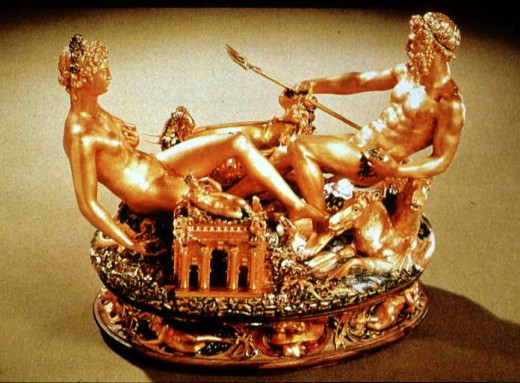
Benvenuto Cellini
One of the greatest goldsmiths of the Italian Renaissance was also one of its most colorful characters. Cellini was born born in Florence in 1500, to a father who made musical instruments. He preferred metal work, and apprenticed to Antonio di Sandro. Legal difficulties forced Cellini to flee Florence, and he received additional training in Siena, Bologna, and Pisa. At 19, he moved to Rome, and some early gold work from this period survives. He left Rome briefly in 1527, after its conquest by the Holy Roman Emperor, Charles V, King of Spain. According to Cellini’s autobiography, he played an important part in the failed defense of the city. He fled Rome again, around 1529, after killing one man and wounding another. He returned to Rome after Paul III became Pope. However, a dispute with the Pope’s illegitimate son forced him to flee again, working in Florence and Venice. He returned to Rome in the mid-1530s, but was accused of stealing gems from a Papal item he was working on, and was imprisoned. Upon release, he left Rome and went to France, and was goldsmith to the court of Francis I. He returned to Florence in 1545, and died there in 1571.
His gold and silver work included medals and objects. No jewelry items survive which can be definitively attributed to Cellini. Perhaps the best known of his smaller creations is a salt cellar made during his years in Paris. This piece, the Saliera, was stolen from the Kunsthistorisches Museum in Vienna in 2003, but was recovered in 2006. He also did large sculptural pieces, with the bronze Perseus with the Head of Medusa being considered one of his finest works. He also produced paintings and designed marble sculpture, although it is unclear if any marble work was produced by his own hand. In addition to his military exploits, Cellini was also an accomplished musician, and allegedly played flute in a Papal orchestra. Much of the information on Cellini comes from his posthumous work, The Autobiography of Benvenuto Cellini. He acknowledges at least five killings and a number of imprisonments and lawsuits in the work.
An excerpt from Cellini’s autobiography, concerning an impending legal matter, helps explain how his temperament may have been a factor in his many relocations. “When certain decisions of the court were sent me by those lawyers, and I perceived that my cause had been unjustly lost, I had recourse for my defense to a great dagger I carried; for I have always taken pleasure in keeping fine weapons. The first man I attacked was a plaintiff who had sued me; and one evening I wounded him in the legs and arms so severely, taking care, however, not to kill him, that I deprived him of the use of both his legs. Then I sought out the other fellow who had brought the suit, and used him also such wise that he dropped it.”
There was a tremendous growth of knowledge and the arts during the Renaissance, but it was still a time of violence and intrigue. The wealth and power of the new mercantile classes was growing, but the Church was still a powerful force. Cellini was in the midst of all these elements, and his larger-than-life style makes him the epitome of the Renaissance Man.
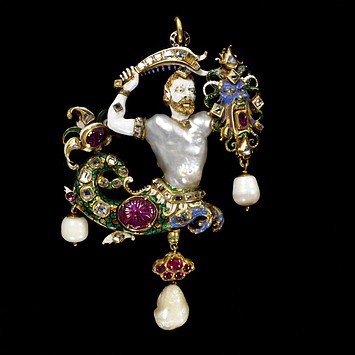
An Interesting Renaissance Jewel?
Some of the best known pieces of Renaissance jewelry feature large baroque pearls, used as the bodies of mermen, swans, boats, and birds. Made in Italy, France, Spain, and the Netherlands, perhaps the best known is the Canning Jewel. The piece measures about 4 inches in height. Baroque pearls, due to their irregular shape, can be difficult to incorporate into many jewelry pieces. However, this same shape lends itself to some incredibly creative work.
The generally accepted legend on this item alleges that it was a work by Cellini, given by the Medici family to the Mughal Emperor of India. After the Indian Mutiny of 1857, the piece came into the possession of Lord Canning, Governor General of India. A 1931 auction catalog from Sotheby’s uses this account. However, there is no support that the piece was made by Cellini, and some experts date it slightly after Cellini’s death. There is no record of the Medicis’ involvement, or of the 16th century gift to a Mughal Emperor. There is no record of when the Mughal Dynasty acquired the piece. However, many experts feel that creation in 16th century Florence is a strong possibility.
What is indisputable is that Lord Canning ended up in possession of the piece. The method of acquisition is not clear. After Lord Canning’s death in 1862, the jewel passed through the hands of Lord Clanricarde and Lord Harewood. Lord Harewood had the item auctioned by Sotheby’s in 1931, and the buyer resold it to the Victoria and Albert Museum in 1935.
In recent years, the Renaissance dating of the item has been questioned. This is largely due to the presence of several Rose Cut Diamonds in the piece, and some feel it is a Renaissance Revival piece. However, Rose Cuts were in use by the 1580 date often used as a date of manufacture. The Renaissance Revival was a 19th century movement, so the piece would have had to have been made very recently before Canning’s acquisition for this theory to be true.
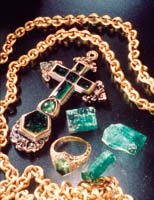
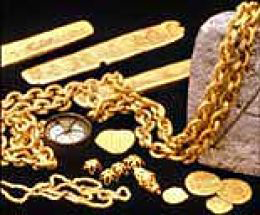
Important New Resources
The discovery of the New World provided access to quantities of gold and silver never before encountered by the Europeans. Areas such as the Gold Coast of Africa also added to the supply. Spanish exploration often followed tales of Cibola or El Dorado, legendary cities of gold. The acquired treasures of the conquered Native Americans was looted and shipped back to Europe. Major silver mining areas in Peru and Mexica were soon being worked, and in the 17th century, gold mines in the interior of Brazil were one of the greatest assets of Portugal. Spain used the wealth to finance wars against Ottomans and Protestants, and the influx of the wealth actually caused inflation and depression in Spain. Silver, used in the famed “pieces-of-eight” coinage, was the most important of the metals by volume and total value. The manifest from the Atocha, lost in 1622 and recovered in 1985, provides a thumbnail sketch of the wealth: 125 gold bars, 1038 silver ingots with a weight of 24 tons, 180,000 silver coins, and at least a dozen boxes of Emeralds and other stones. It appears that while 13,500 carats of Emeralds have been recovered, the estimate of the weight of the Emeralds originally on board is 10 times that amount. The largest recovered Emerald was a 78 carat rough. A 26 carat rough was cut into a 12.72 carat stone valued at a quarter million dollars. The majority of the stones are thought to be from the revered Muzo mines, known for producing fine color Emeralds of relatively high clarity.
The presence of these new sources of precious metal gave Europe a great deal of material for coinage and trade. This was very important to Spain, which had little in the way of manufactured goods to sell or trade. It was well into the late 18th century before gold would be in short supply again.
More about the development of Diamond cutting and Georgian Jewelry in The History of Jewelry: 1500-1800-Part 2.
More Renaissance Jewelry
- Christie\'s Auction Catalog Atocha 1622
Some great Atocha Treasure items from the Christie's Catalog - Search the Collections - Victoria and Albert Museum
Search over one million objects from the V&A Collections including Medieval and Renaissance items.
